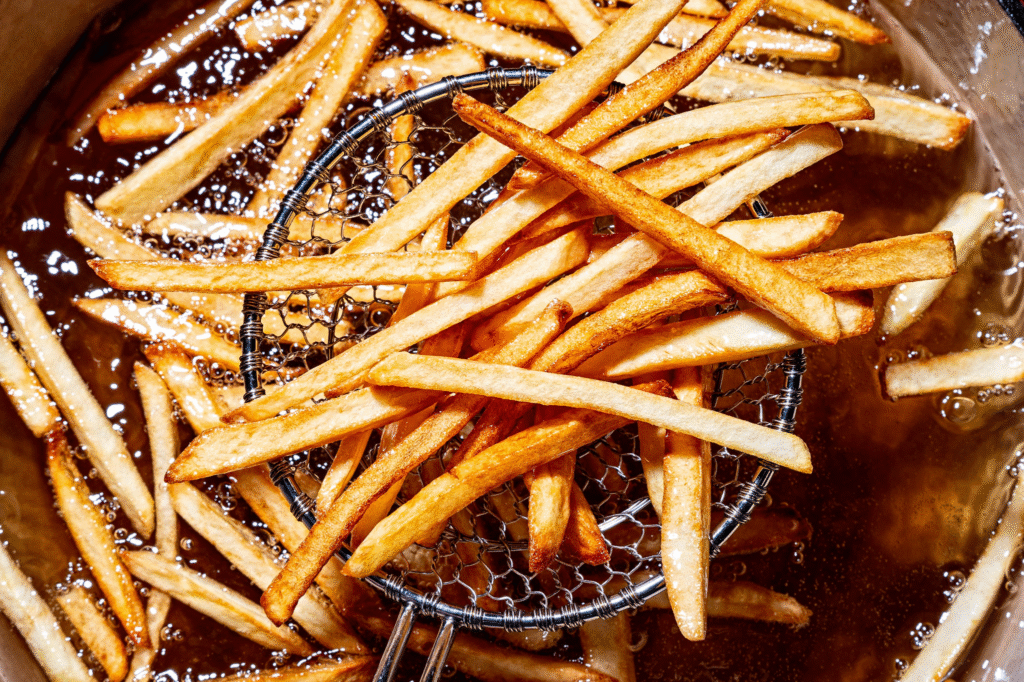
A few years ago, I started looking more closely at what goes into the food we eat every day. I was shocked to find out how many extra ingredients are added to our food—not for flavor or nutrition, but to make it last longer on shelves, to cut costs, and to create artificial flavors. That was bad enough, but what really got my attention was the truth about vegetable oils.
For years, we were told that vegetable oils like canola and soybean were “healthy” alternatives. But the more I read, the more I realized they’re not as safe as we’ve been led to believe—especially when used for high-heat cooking like frying. Removing additives and coloring from food is easy, but replacing cooking oil is a bigger challenge, which is why so many are now turning to beef tallow french fries.
The Problem with Vegetable Oils
Vegetable oils are high in omega-6 fatty acids. In small amounts, omega-6 is fine, but most people today eat way too much of it. This throws off the natural balance between omega-6 and omega-3 fats in our diets. That imbalance is linked to chronic inflammation, which can lead to serious health issues over time.
There’s also the problem of what happens when vegetable oils are heated. Oils like canola, soybean, and sunflower break down at high temperatures, producing harmful chemicals. One of these is called HNE (4-hydroxynonenal), a toxic byproduct that has been linked to diseases such as heart problems, Alzheimer’s, Parkinson’s, liver disease, and even cancer.
To make matters worse, in many restaurants, the same oil is used for multiple frying batches before it’s changed. That means harmful compounds have more time to build up. This isn’t just a new concern—scientists have been studying it since the 1990s.
The Acrylamide Issue
Another concern is acrylamide, a chemical that forms when starchy foods (like potatoes) are cooked at high temperatures. Health agencies such as the World Health Organization and the U.S. FDA recognize acrylamide as a possible cancer risk. It’s found in many fried and baked foods—coffee, chips, cereals—but research shows that using stable animal fats like beef tallow can reduce its formation compared to vegetable oils.
In one study, frying with lard or ghee produced 8–12 times less acrylamide than frying with soybean oil. The reason is simple: saturated fats like tallow are more stable under heat and don’t break down as easily. The FDA even points out that acrylamide is mainly a problem in plant-based foods, not in animal products like meat or dairy.
Why Beef Tallow Is Different
Beef tallow is a natural fat that has been used for centuries in cooking. It’s mostly saturated fat, which means it stays stable and safe even at high frying temperatures. For decades, saturated fat was blamed for heart disease, but newer research has shown that the story is more complex—and in some cases, the old advice was overly simplified.
Tallow also has a balanced mix of fatty acids and contains fat-soluble vitamins. Unlike seed oils, it doesn’t flood your diet with omega-6 fats.
The Flavor Advantage
Of course, health is important—but so is taste. And here, beef tallow is unbeatable. It gives fries a golden, crispy outside and a rich, savory flavor that vegetable oils simply can’t match.
If you remember the fries from the 1980s and early 90s, before fast-food chains switched to seed oils, you know the flavor I’m talking about. It’s not just nostalgia—it’s the way fries were meant to taste. Today, you’ll mostly find tallow-fried potatoes only in certain high-end restaurants, which is a shame because the flavor is pure comfort food perfection.
Simple Ingredients, Honest Cooking
My fries are made with only three ingredients: potatoes, beef tallow, and sea salt. No additives, no artificial flavors, no industrial seed oils. For me, choosing beef tallow isn’t about following a trend—it’s about returning to real cooking, using traditional methods that respect both flavor and health.
If you’ve never tried fries cooked in beef tallow, you’re in for a surprise. They’re crispier, tastier, and more satisfying than anything cooked in canola or soybean oil.
The Final Word
Switching to beef tallow was one of the best decisions I’ve made for my food. It lets me serve something that’s not only delicious but also safer and closer to the way our grandparents cooked. Whether you care about the science, the history, or just the taste, beef tallow makes a difference you can feel in every bite.




